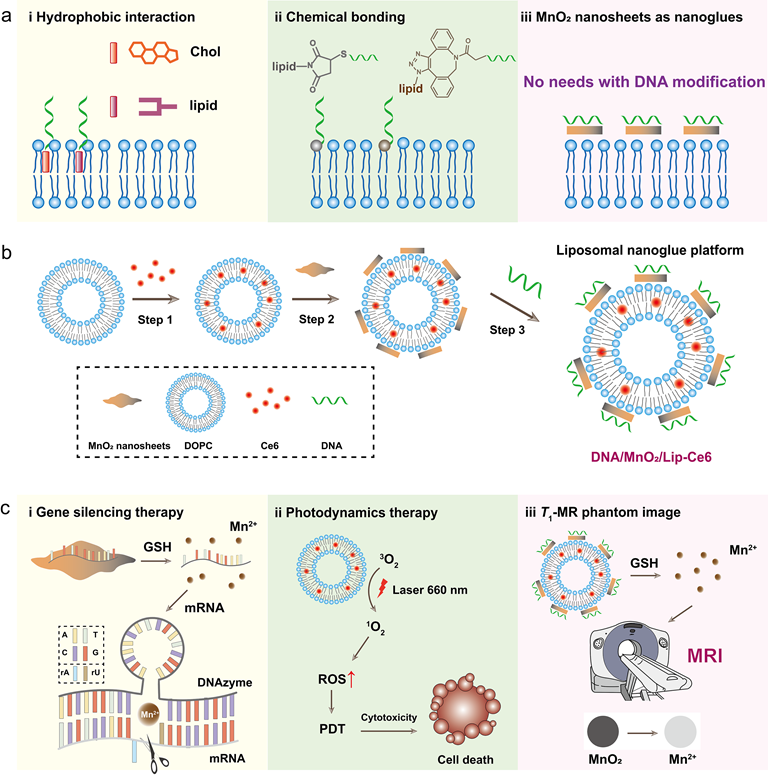Recently, Prof. Wang Feng’s research groupfromtheSchool of Food and Biological Engineering of our university hasmade serious progress in the research and development of pharmaceutical preparations. The related work was published in ACS Nano and ACS Applied Materials & Interfaces, respectively.

The engineered drug delivery system aims to improve drug dissolution, extend drug circulation time in vivo and enhance the tissue targeting ability.
Although nanomaterials have been widely used in drug delivery systems, developing efficient drug delivery systems that penetrate cell and tissue barriers still faces significant challenges.
Over the past decade, researchers have developed a series of nanoparticles that feature motion properties, namely nanomotors, for effective drug delivery.
Among them, the nanomotor system based on chemical energy conversion can realize the movement characteristics of nanomotors based on constructing asymmetric nanostructures.
It is worth pointing out that most of the previous nanomotor errors have come from individual nanoparticles, such as Janus SiO2 and Janus Mg/Pt particles.
Considering the fluidity of the lipid membrane, the research group achieves the asymmetric controlled assembly of gold-platinum nanoparticles (Au@Pt) on liposomes by adjusting the composition, phase, and cholesterol of phospholipids and establishes a class of liposomal nanomotor systems.
The asymmetrical Au@Pt on the membrane of the liposomal nano motor gives excellent catalase activity to the nanomotor, which can promote the decomposition of H2O2 and generate O2 to promote the directional movement of the nanomotor.
Moreover, the study also finds that cancer cells can effectively take up liposomal nanomotor loaded with chemotherapeutics. In addition, it possesses good cell penetration ability when applied on plant leaves with cell walls.
The above-mentioned liposomal nanomotor system has broad application value in biomedicine and plant nanotechnology.
This paper on this issue is published in ACS Nano. Wang Zhenfeng (MS student), Yan Yong(Ph.D. student), and Li Chao (Assoc. Prof.) of Prof. Wang Feng’s research groupare theco-first authors. The Hefei University of Technology is the only corresponding university, and Prof. Wang Feng is the sole corresponding author.
![]()
![]()

Schematic diagram of the synthesis of the liposomal nanomotor and the highly effective cell uptake in cancer cells and plant leaves
Nanoglue, a bioadhesive made of polymers or nanoparticles that bonds two non-adhesive surfaces together (Nature2014, 505, 382-385; Angew. Chem.2014, 58, 6369-6373), has been extensively used in many fields such as hydrogel adhesion, cosmetic surgery, hemostasis, wound closure and repair.
Inspired by nanoparticle solutions as a gel or a biological tissue adhesive, Prof. Wang Feng’s research group uses a manganese dioxide sheet as a binder to “glue” nucleic acid molecules to the liposomal surface, which is applied in tumor photo-gene therapy and expands the connotation of nanoglue.
The research group uses DNAzyme (a molecule that can cleave the intracellular mRNA in the presence of auxiliary metal ions) as a model nucleic acid and zwitterionic liposomes as model liposomes to construct manganese dioxide sheet-based liposomal nanoglue.
Under intracellular redox conditions, the manganese dioxide sheet is reduced to manganese ions. Then, manganese ions are combined with DNAzyme to cleave the corresponding intracellular mRNA molecules to kill tumor cells.
To realize photo-gene therapy of liposomal nanoglue, with the help of nuclear magnetic resonance imaging, the research groupcarries out a comprehensive biomedical evaluation of the photosensitizer-loaded liposomal nanoglue.
This liposomal nanoglue system provides not only an efficient and economical platform for delivering nucleic acid drugs but also a new idea for the modification of other biological macromolecules on liposomes.
The paper on this issue is published in ACS Applied Materials & Interfaces. Yu Yue (MS student), and Wang Zhenfeng (MS student) of Prof. Wang Feng’s research group are co-first authors. The Hefei University of Technology is the only corresponding university, and Prof. Wang Feng is the sole corresponding author.

Schematic diagrams of the synthesis ofthe liposomal nanoglue and the photo-gene therapeuticapplications
These works are supported by the National Natural Science Foundation of China (NSFC), the Key Research and Development Plan of Anhui Province, the Distinguished Youth Foundation of Anhui Province, and the Fundamental Research Funds for the Central Universities of China.
Prof. Wang Feng is devotedto studying nano-bio interface and has made many high-level research achievements in the interaction between nanomaterials and lipid membranes, cell membranes, and cell membranes containing cell walls.
So far, he has published 56 academic papers in domestic and foreign journals, including 31 articles, such as JACS (1), Angew. Chem (1),Adv. Mater. (2), ACS Nano (3), published as the first/corresponding author.
His papers have been cited 3,380 times (according to Google Scholar data), and 6 papers have been cited more than 100 times each, with the highest citation for one article being cited 753 times. In addition, three of his research projects have been listed in the NSFC program (2 in general programs and 1 in the program for young scholars).
Link to the original article:
Original links:
1. ACS Nano: https://pubs.acs.org/doi/10.1021/acsnano.2c00327
2. ACS Applied Materials & Interfaces: https://pubs.acs.org/doi/10.1021/acsami.2c04022
(Story: Tao Wei/Picture: Wang Feng/Reviewed by Li Yan)




